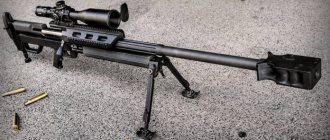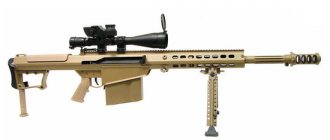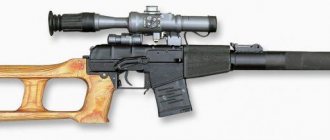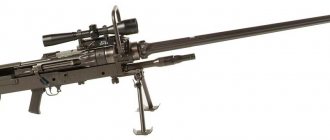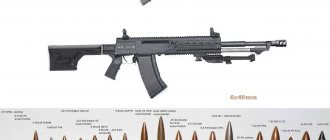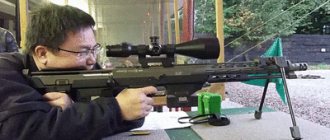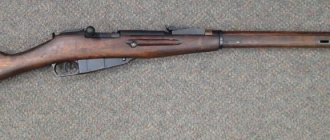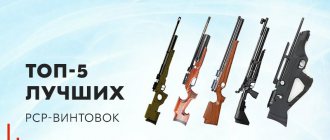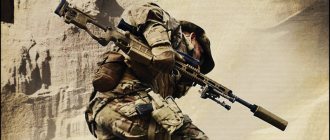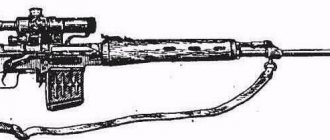Type of anti-material rifle
| Hecate II | |
| PGM Hecate II | |
| Type | Anti-material rifle |
| Place of origin | France |
| Service history | |
| In service | 1993–present |
| Used | See Users |
| Wars | War in Afghanistan [1] Conflict in northern Mali Operation Serval Yemeni Civil War (2015-present) [ citation needed ] |
| Production history | |
| Designer | Gilles Payen |
| Manufacturer | PGM Precision |
| Characteristics | |
| Weight | 13.8 kg (30.42 lb) without scope |
| Length | 1,380 mm (54.3 in) 1,140 mm (44.9 in) with stock removed |
| Barrel length | 700 mm (27.6 in) |
| Cartridge | .50 BMG (12.7×99mm NATO) |
| Action | Gate |
| starting speed | 825 m/s (2,707 ft/s) |
| Effective firing range | 1800 m |
| Maximum firing range | More than 2000 m |
| Feeding system | 7-round detachable box magazine |
| Attractions | Telescopic sights |
Hecate II
is the standard heavy sniper rifle and anti-materiel rifle of the French Army, sometimes known as the
FR-12.7
(French: Fusil repeat de caliber 12.7 mm or "12.7 mm caliber repeat rifle"). Manufactured by the French company PGM Précision. It is the largest weapon produced by PGM, chambered in .50 BMG (12.7×99mm NATO). The rifle's name comes from the ancient Greek goddess Hecate.
Design[edit]
Its design is the same metal frame as other similar rifles in the PGM family, only on a larger scale. The barrel of the Hécate pistol is manufactured by FN Herstal and coated with stellite, which is also used in heavy machine guns. This increases the longevity of the barrel. [2] It is equipped with a highly effective muzzle brake that reduces felt recoil to approximately the level expected from a NATO rifle chambered for the 7.62×51mm cartridge. [3] The rifle features an adjustable front bipod and rear monopod for maximum accuracy. The stock is also adjustable.
The standard scope used with the Hécate II is the SCROME LTE J10 F1 10x telescope. [ citation needed
]
French SWR Hecate II
The previous article talked about the French sniper rifle Ultima Ratio from PMG, thanks to which the arms company from a small company has become a worthy competitor to the titans of the global arms market. Having correctly directed the funds received from the government order for this rifle, the company managed to expand its production and take on another project, which was intended primarily to meet the needs of the army and police. We are talking about the large-caliber Hecate II sniper rifle, which was made on the basis of the same Ultima Ratio, so we can say that this is another version of the “Final Argument”, only this time the argument is much more compelling.
Since the proliferation of large-caliber sniper rifles, the armies of many countries have felt a shortage of such weapons. Someone decided to modernize outdated anti-tank rifles, increasing their accuracy. Someone decided to purchase similar weapons in other countries or purchase a production license. And someone created new models using all modern developments in firearms. Moreover, it cannot be said that one decision was bad and the other ideal. For example, producing your own weapons always seems like a plus, but in the case of large-caliber rifles, of which not so many are needed for the army and especially the police, it is much cheaper for a small country to purchase such weapons from a foreign company than to spend money on its own development and production. However, it all depends on how developed the weapons industry is in a particular country and how great the need for such weapons is. France is not a small country at all, besides, this country does not have the last voice on our planet, so buying weapons abroad is not respectable, or something. Taking into account the rather fruitful work of the PGM company in creating a rifle chambered for 7.62x51, it was this company that was entrusted with developing a large-caliber rifle.
The task was quite simple, since the weapon itself is not complicated and simple, and the main characteristics are mainly determined by the quality of production. Since the “bolt” chambered for 7.62x51 already existed and satisfied all the requirements for it, it was on the basis of this weapon that it was decided to make a large-caliber sniper rifle chambered for .50BMG. In other words, some components of the weapon were simply enlarged, leaving the main essence unchanged. True, I had to tinker with the muzzle brake-recoil compensator in order to reduce recoil when firing with minimal negative effects on the accuracy of the weapon.
Thus, the Hecate II large-caliber sniper rifle is a weapon built around a longitudinally sliding bolt that locks the barrel when turned by 3 stops. Taking into account the fact that the ammunition of the weapon was changed, it was necessary to abandon the widespread use of light alloys, which increased the weight of the rifle to 13.8 kilograms; the heavy barrel of the weapon is of no small importance here. The barrel mount also had to be changed, eliminating the 4 bolts that pass through the receiver and go into the cutouts under the chamber. A protrusion appeared in the front part of the receiver on which a handle for carrying weapons was attached. They swear heavily at this handle, since it is installed far from the center of the weight of the weapon, and it is virtually impossible to carry the weapon by this handle if an optical sight is installed, since in its raised position there is only two fingers of space left between the optics and the handle, which It’s not at all convenient to carry almost 14 kilograms of weight, and the risk of damaging the optical sight is great. In addition, not every high magnification optical sight will allow you to raise the carrying handle at all, although with the standard SCROME LTE J10 F1 10x optical sight the handle rises completely, but it’s just a problem to grab it. The rifle does not have open sights, which is a pity.
Over long distances, the rifle is transported in a hard case in disassembled form. The butt of the weapon is detached for transportation, the bolt is removed, the bipod is folded, and the optical sight remains in place, which is a plus. The butt itself can be adjusted in length and height of the cheek rest. On the back side of the butt there is a butt pad made of porous rubber, which softens the recoil when shooting; in addition, for the same task, a fairly large muzzle brake-recoil compensator is installed. The weapon is fed from detachable magazines with a capacity of 7 rounds. The length of the weapon is 1380 millimeters with the butt, while the barrel is 700 millimeters long. On the contrary, he indicated the effective range of use of weapons at 1500 meters, when samples of similar design and quality can boast larger numbers. In reality, the weapon is no worse than most SWRs and, with high-quality ammunition, can show amazing results.
This large-caliber sniper rifle has proven itself on the battlefield. After being adopted by the French army, it found its place in the armies of Estonia, Indonesia, Slovenia and even Switzerland, which has its own excellent samples of the SWR, which indicates the high quality of the weapon and its effectiveness. The disadvantages of this weapon would be, first of all, the lack of open sighting devices, since the failure of the optical sight will make further use of the weapon impossible. This also includes the carrying handle, although according to some reports it was changed, but there is no confirmation of this. The large weight of the rifle is rather a plus in this case, rather than a minus, since the large mass of the weapon significantly reduces the sharpness of the recoil when shooting, and therefore increases the accuracy and comfort of shooting. The attachment of the butt to the weapon also raises doubts, it is very fragile in appearance, but judging by the fact that there are no negative reviews about this unit, it means that it can fully withstand all the loads that arise during the shooting process.
To sum up all of the above, it should be noted that the PGM company has seriously grown only on these two rifle samples, which made it possible to move on with an obviously positive result and create a new weapon, but more on that in the next article.
Links[edit]
- Neville, Lee (2016-08-25). Modern snipers
. General Military. Osprey Publishing. pp. 105–106. ISBN 9781472815347. - Forgotten Wapeons - "PGM Hecate II: Hardened +0.50 Sniper Rifle" on YouTube
- Forgotten Wapeons - "PGM Precision Hecate II on the Range" on YouTube
- ^ abc Lagno, Laurent (2016-06-17). "Le mini Hecate II, le nouveau fusil de précision français destiné aux force spéciales". Zone militaire
(in French). - "Kaitseministeerium ostab Eesti kaitseväele snaiprirelvi". mod.gov.ee
(in Finnish). 2007-07-06. Archived from the original on 2011-07-20. - "Le fusil de precision de 12.7 mm PGM". defense.gouv.fr
(in French). 2016-10-19. - "Hecate II: Senapan Runduk Heavy Barrel Andalan Den Bravo Paskhas TNI AU". Indomiliter.com
(in Indonesian). 2015-06-07. Retrieved October 18, 2019. - "isayeret.com Israeli Special Forces Database". Archived from the original on 2016-07-25. Retrieved February 22, 2022.
- "Latvian National Armed Forces, facts and figures" (PDF). 2007. Archived from the original (PDF) on 10/01/2008. Retrieved October 1, 2008.
- "12.7 mm PGM Hecate sniper rifle". Ministry of Defence, Slovenian Armed Forces
. Retrieved October 31, 2022.
Combat and service weapons
The PGM Hecate II sniper rifle is in service in France under the name FR-12.7. Two FR F2 sniper rifles are visible in the background
The French sniper rifle PGM Hecate II is designed to destroy enemy personnel, to combat enemy snipers, to destroy lightly armored vehicles, radars, artillery and missile launchers, and aircraft in parking lots. The rifle was developed and mass-produced by PGM (France); since 1993 it has been in service with the French Army under the designation FR-12.7 (Fusil à Répétition de caliber 12.7 mm). On the international arms market, the rifle was sold by the American-Belgian company FN Herstal Mfg under the name FN Hecate II.
The PGM Hecate II is a repeating rifle with manual reloading. The bolt is longitudinally sliding; when fired, the barrel bore is locked by turning the bolt and placing it on three lugs. On the left side of the rifle's receiver, above the trigger guard opening, is a mechanical safety slider. The force on the trigger when firing is adjustable within 1.4 - 1.6 kg. For shooting, .50 BMG (12.7x99mm NATO) cartridges are used, fed with cartridges from a detachable 7-round magazine. The magazine release is located under the front edge of the trigger guard, in front of the trigger. The barrel of the rifle is removable; it is attached to the receiver and frame of the rifle with 5 screws. It is possible to install a muffler on the rifle barrel, for which the muzzle brake is removed (attached to the barrel with 2 screws) and a muffler weighing 3.88 kg and length 460 mm is installed in its place. The rifle does not have a mechanical sight; a Picatinny rail is installed at the top of the receiver for mounting optical day and night sights. The length of the rifle butt is adjustable, the adjustment stroke is 53 mm. The cheekpiece and butt plate of the butt are adjustable in height; under the butt there is an additional support - a bipod, which folds forward in the stowed position. Also, in the stowed position, the butt of the rifle is folded; by turning it, it is retracted to the right side of the weapon. The stock release button is located on the left side of the stock neck. The bipod mounted on the forend is adjustable in height. All metal parts are coated with anti-corrosion coating, the pistol grip and butt plate are made of polymer. There is also a second version of the rifle’s finish, with a wooden fore-end, handle, butt plate and butt cheek; it also has a non-folding butt and weighs about 0.5 kg more. than the version with a tubular folding stock.
Sniper rifles
PGM UR Hecate II. Large-caliber sniper rifle. (France)
The French large-caliber sniper rifle PGM Ultima Ratio Hecate II 12.7 mm caliber is designed to solve a wide range of tasks. These include the destruction of manpower, including those wearing body armor at long distances, conducting harassing fire, fighting enemy snipers, and destroying unexploded ordnance from a safe distance. This rifle is designated Hecate II, and is part of the huge family of UR (Ultima Ratio) sniper rifles, while being the largest in it. The rifle is produced by the French company PGM Precision.
Like other rifles in this family, the Hecate II sniper rifle is built according to a modular design - all elements are assembled on an aluminum alloy rail and, if necessary, can be easily replaced. The receiver is a massive milled part and is attached directly to the frame. The heavy barrel of the weapon is equipped with a massive single-chamber active muzzle brake. The barrel bore is locked by a longitudinally sliding bolt with three lugs.
The trigger mechanism has a lightweight striker, which reduces inertial delays and misalignment during operation of the mechanism. Two-stage release with warning. The rifle has no mechanical sighting devices. It is standardly equipped with a SCROME LTE J10 F1 10x telescopic sight. The rifle is fed with cartridges from a removable magazine with a capacity of 7 rounds.
PGM UR Hecate II. Large-caliber sniper rifle. (France)
For stability when shooting, the rifle has a folding front bipod, as well as a folding rear rest under the butt. A folding articulated handle is designed for carrying. When transporting over long distances, the rifle is placed in a special case. Hecate II series sniper rifles are distinguished by high quality workmanship and very high shooting accuracy. Currently, the rifle is in service with army units and special forces in France, Estonia, Indonesia, Slovenia, and Switzerland.
Characteristics:
- Weight, kg: 13.8 without sight;
- Length, mm: 1,380/1,140 with stock unfolded/folded;
- Barrel length, mm: 700;
- Cartridge: 12.7×99 mm;
- Caliber, mm: 12.7;
- Operating principles: manual reloading, longitudinally sliding rotary bolt;
- Initial bullet speed, m/s: 825;
- Sighting range, m: 1800;
- Maximum range, m: over 2000;
- Type of ammunition: box magazine for 7 rounds;
- Sight: optical.
PGM UR Hecate II. Large-caliber sniper rifle. (France)
Operating countries[edit]
Select a country or scroll your mouse wheel
- Austria - is in service with the EKO Cobra police special forces unit.
- Brazil - is in service with the COMANF special forces.
- Egypt - is in service with the special forces Rapid Deployment Forces and Black Cobra.
- Israel
- Indonesia
- Lithuania
- Latvia
- Poland
- Saudi Arabia
- Slovenia
- Switzerland
- France
- Estonia - since 2007.
Gewehr 41
G41 rifle with ZF41 scope
Self-loading sniper rifle developed in 1941. The first prototypes were immediately sent for military testing directly to the Eastern Front. As a result of the tests, certain shortcomings were found, but the army’s strict need for automatic rifles forced the command to adopt it.
Before the G41 rifles entered service, German soldiers actively used captured Soviet SVT-40 sniper rifles with automatic loading. Individual experienced snipers were armed with the G41 rifle. In total, about 70,000 units were produced.
The G41 allowed sniper fire at distances of up to 800 meters. The magazine capacity of 10 rounds was very useful. Frequent delays in firing due to contamination, as well as problems with accuracy of fire once again proved the need to refine the rifle. It was upgraded to the G43 version.
Characteristics:
